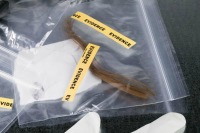Month: April 2015
-

Actions of Coconut Creek detectives investigating Taser death questioned
By Dan Christensen
FloridaBulldog.org
Coconut Creek detectives investigating the death of a black man shot multiple times by police Tasers in the Wynmoor condo complex have re-questioned two eyewitnesses in what outside police sources say was an apparent attempt to discredit their testimony. -

/
4945 SEEN/
Talc-Ovarian cancer link sparks growing legal battle
By Fair Warning
FloridaBulldog.org -

/
4219 SEEN/
Another Startling Verdict for Forensic Science
By Ryan Gabrielson
ProPublica
With the introduction of DNA analysis three decades ago, criminal investigations and prosecutions gained a powerful tool to link suspects to crimes through biological evidence. This field has also exposed scores of wrongful convictions, and raised serious questions about the forensic science used in building cases. -

U.S. judge asked to okay deposition of FBI agent in Sarasota Saudi probe
By Dan Christensen
FloridaBulldog.org
The FBI should be ordered to publicly identify and make available for questioning under oath the special agent it says authored a “wholly unsubstantiated” 2002 report that connected a Sarasota Saudi family to 9/11 terrorists, newly filed court papers say. -

Rubio’s new campaign plagued by continuing election law violations
By Francisco Alvarado
FloridaBulldog.org
Two days before he officially announced his run for the presidency last week, Marco Rubio’s campaign disclosed that it had refunded more than $23,000 in excessive contributions it previously had accepted.
Support Florida Bulldog
If you believe in the value of watchdog journalism please make your tax-deductible contribution today.
We are a 501(c)(3) organization. All donations are tax deductible.

Join Our Email List
Florida Bulldog delivers fact-based watchdog reporting as a public service that’s essential to a free and democratic society. We are nonprofit, independent, nonpartisan, experienced. No fake news here.

